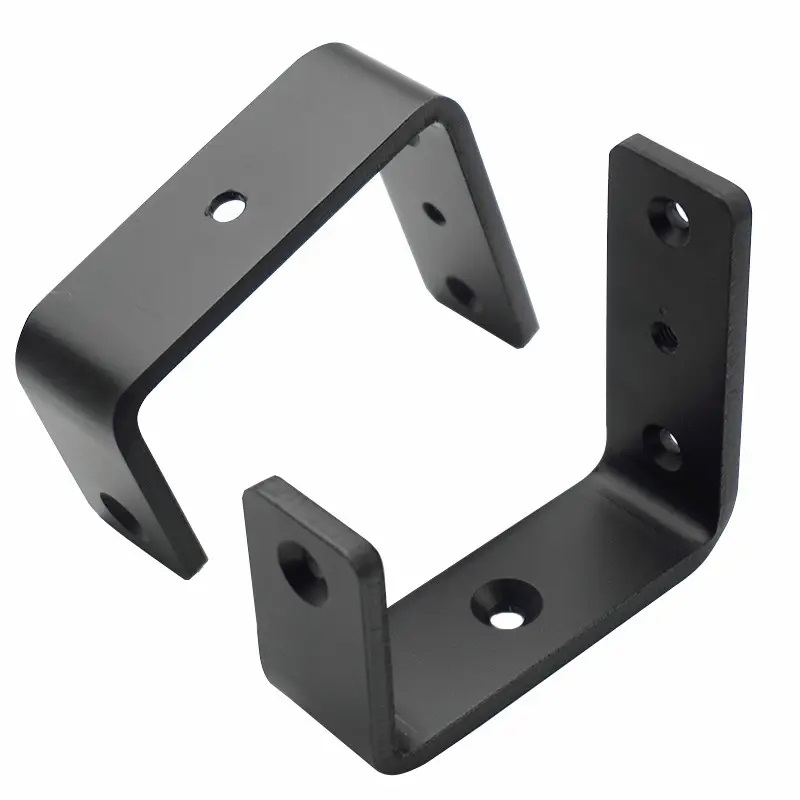Stamping Parts: Precision, Efficiency, and Versatility in Modern Manufacturing
2025-05-13
In today’s fast-paced manufacturing industry, precision, efficiency, and cost-effectiveness are paramount. One manufacturing process that encapsulates these qualities is stamping. Stamping parts, also known as sheet metal stamping, is a widely used technique for producing high-quality, precise, and durable components for a variety of industries. From automotive to electronics, and from aerospace to consumer goods, stamping plays a crucial role in creating parts that meet specific design requirements while optimizing production costs and time.

What Are Stamping Parts?
Stamping parts refer to components created through the process of metal stamping, where a metal sheet is placed between a die and a punch, and then force is applied to shape or cut the material into a specific form. This process can involve various techniques, such as cutting, bending, embossing, punching, and blanking, depending on the desired outcome. The raw material used in stamping is typically sheet metal, but other materials like plastic and aluminum can also be used.
The result is a wide range of stamped parts, which are used in numerous applications across various sectors. These parts are known for their precision, strength, and ability to withstand demanding conditions.
The Stamping Process
The stamping process involves several stages:
1. Designing the Die:
The first step in stamping is designing the die, which is the tool that shapes the metal sheet. The die consists of two parts: the punch and the die cavity. The punch is the tool that presses into the metal, while the die cavity is the corresponding hollow space where the metal is shaped. The design of the die is crucial as it ensures the final stamped part will have the required dimensions and quality.
2. Feeding the Material:
The metal sheet is fed into the stamping machine, where it is aligned precisely to ensure uniformity during the shaping process. This is typically done using an automated feeding system.
3. Forming the Part:
Once the material is aligned, the machine applies pressure to the die, causing the punch to shape or cut the metal sheet into the desired part. Depending on the complexity of the design, multiple stamping operations may be required.
4. Finishing:
After the part is stamped, it may undergo finishing processes such as deburring (removing sharp edges), coating, or assembly with other components to create the final product.
Advantages of Stamping Parts
1. High Precision and Consistency:
One of the major advantages of stamping is its ability to produce parts with exceptional precision. Since the process is controlled by precise dies and machinery, stamped parts can achieve tight tolerances and consistent dimensions, even when producing thousands of units.
2. Cost-Effectiveness:
Stamping is highly efficient for mass production. Once the dies are created, the process can be repeated countless times, making it one of the most cost-effective methods for producing high volumes of parts. The use of automated machinery also reduces labor costs and increases production speed.
3. Strength and Durability:
Parts produced through stamping tend to be highly durable and strong. The metal sheets used are often hardened, and the stamping process itself can impart additional strength and resilience to the part, making it suitable for demanding applications like automotive or industrial machinery.
4. Versatility:
Stamping is incredibly versatile, with the ability to create a wide variety of part shapes and sizes. It can produce simple flat components as well as complex, three-dimensional parts with intricate features. Additionally, stamping can be applied to a wide range of materials, including steel, aluminum, copper, and even some types of plastic.
5. Fast Production Speed:
Stamping machines can produce large quantities of parts in a relatively short time. The automated nature of the process ensures that production runs are quick, efficient, and consistent, reducing lead times for manufacturers and helping to meet tight delivery schedules.
Common Applications of Stamping Parts
1. Automotive Industry:
The automotive sector is one of the largest consumers of stamped parts. Stamping is used to produce a variety of components such as car body panels, brackets, bumpers, engine parts, and interior components. The need for high strength, durability, and precision in automotive parts makes stamping an ideal choice for this industry.
2. Electronics:
Many electronic devices require stamped metal parts, such as circuit board components, connectors, battery housings, and heat sinks. The precision of stamping ensures that these parts fit perfectly within the designs of sensitive electronic equipment.
3. Aerospace:
The aerospace industry uses stamping for producing high-performance parts such as aircraft brackets, panels, frame components, and landing gear parts. Given the demanding nature of aerospace applications, stamping ensures that parts are both lightweight and strong enough to withstand harsh conditions.
4. Consumer Goods:
Stamping is also employed to create parts for consumer goods, including appliances, furniture, tools, and sporting goods. The ability to produce a large quantity of parts quickly and economically makes stamping a preferred method for mass-producing everyday products.
5. Medical Devices:
The medical industry uses stamped parts for creating components like surgical instruments, medical enclosures, and implants. Precision and reliability are critical in medical applications, and stamped parts offer both.
Challenges and Considerations
1. Initial Die Cost:
While the stamping process is cost-effective for large-scale production, the initial cost of designing and manufacturing the die can be expensive. However, this cost is typically recouped as the volume of parts produced increases.
2. Material Limitations:
Stamping is best suited for flat sheet materials. Materials with irregular shapes or properties that make them difficult to handle may not be ideal for stamping. Special considerations are needed for more complex materials.
3. Tool Wear:
Over time, the tools and dies used in the stamping process may wear down, which can affect the precision of the parts. Regular maintenance and replacement of tooling are necessary to maintain production quality.
Conclusion
Stamping parts represent a critical part of modern manufacturing, offering an efficient, cost-effective, and precise method of producing high-quality components. Its advantages in speed, durability, and versatility make it indispensable across many industries, including automotive, electronics, aerospace, and more. Despite some initial costs and material limitations, the benefits of stamping far outweigh the challenges, particularly when producing large quantities of parts. As industries continue to demand higher precision and cost-effectiveness, stamping will remain a cornerstone of manufacturing excellence.


